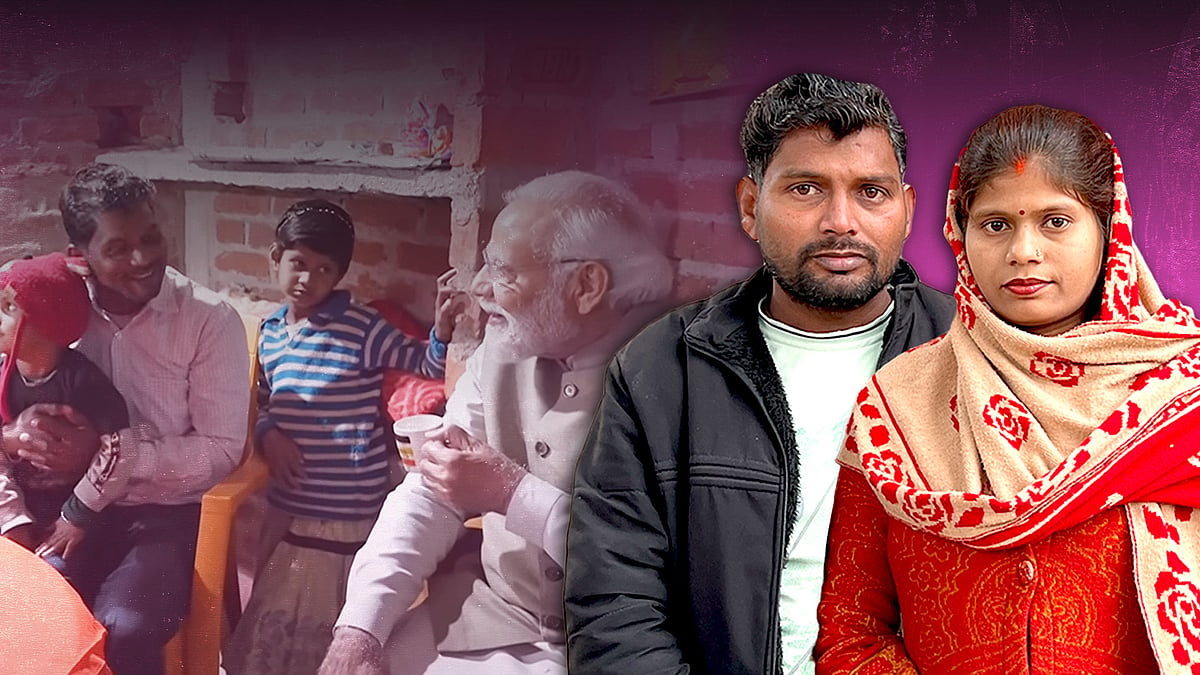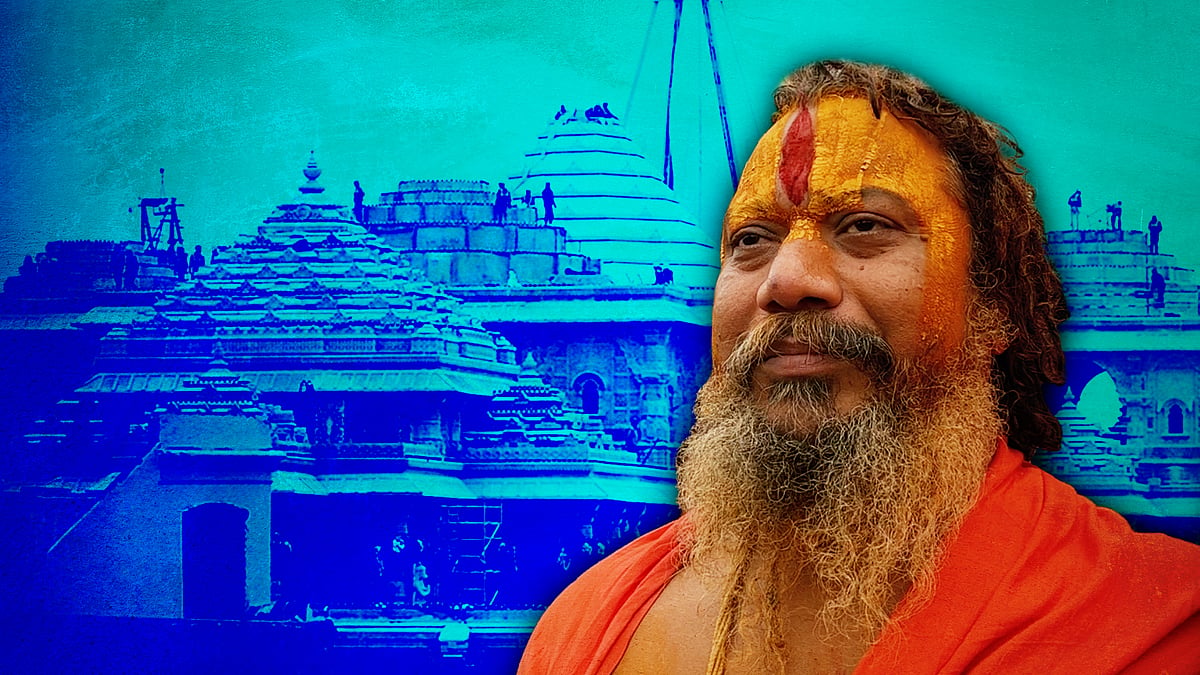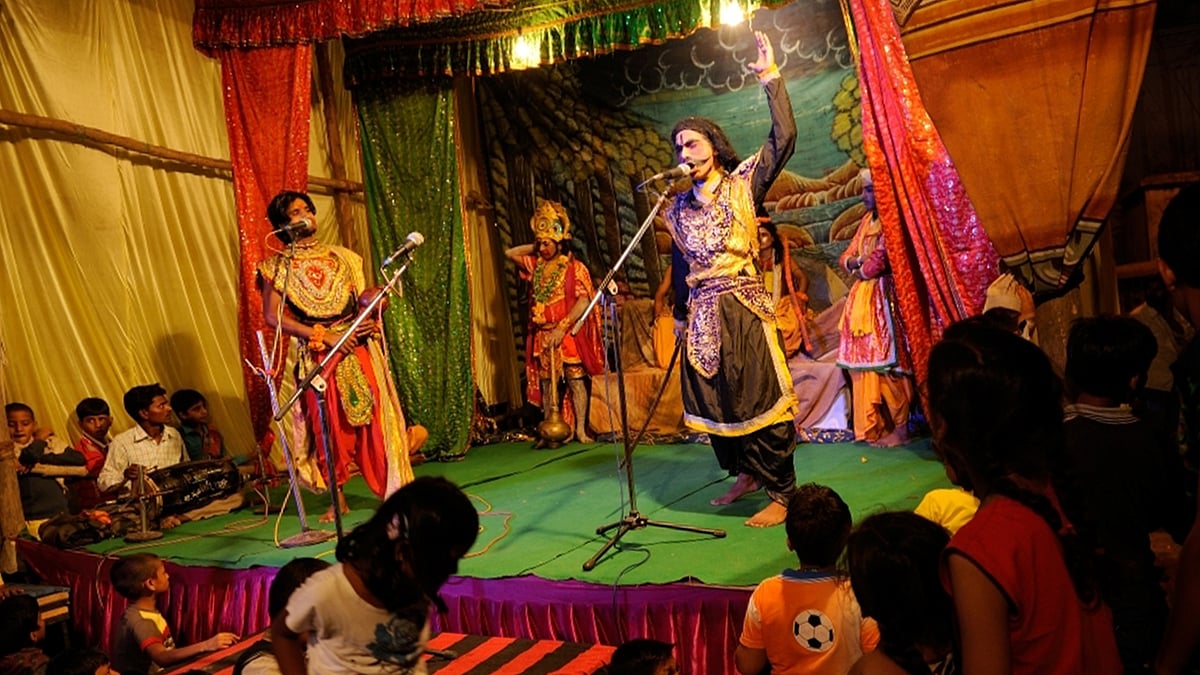Modi’s ‘political triumph’, ‘old wounds’: Foreign media on Ayodhya inauguration
International media reports prominently featured references to the Babri mosque and Hindu nationalism.
As sections of the Indian press adopted a celebratory tone in the run-up to the pran pratishtha ceremony, ad rates surged, pages on Ayodhya turned daily, and there were special media campaigns for the Ram Mandir inauguration led by Prime Minister Narendra Modi.
With this festive mood in the background, the Babri Masjid and its demolition was almost conspicuous by absence – in sharp contrast to how the mainstream media had covered the razing down of the monument in 1992. But not for the international media, whose reports in the wake of the inauguration prominently featured references to the mosque, in headlines as well as in the copies. As much as they did the politics of Hindutva surrounding the movement for the temple, as well as the role played by PM Modi and the BJP.
Let’s take a look.
American press
“Modi opens a giant temple, a triumph toward a Hindu-first India,” read the headline of a New York Times report as the strap noted that “the temple inaugurated by the prime minister is on the site of a centuries-old mosque destroyed in a Hindu mob attack that set a precedent of impunity against Muslims”.
A New York Times piece titled “Why India’s new Ram Temple is so important?” noted that the Hindu nationalists look at January 22 as “a day of ultimate vindication, or even revenge — against India’s medieval Muslim rulers, and against the country’s independence leaders, who sought to stay neutral with regard to religion”.
It further said: “Naturally, India’s secularists see the rise of a Ram temple on the site of the Babri Mosque as confirmation of their own defeat, if not as a blasphemous conflation of Mr. Modi with Ram. India’s 200 million Muslim citizens feel by and large alienated, which may be the point.”
A report by the publication was titled “Modi opens a giant temple in a triumph for India’s Hindu nationalists”. It noted the Ram Temple campaign’s leaders had declared earlier that the bricks collected for it would “not just be used for the temple’s construction on land occupied for centuries by a mosque. They would be the foundation for a Hindu rashtra, or Hindu nation, that would correct what right-wing Hindus saw as the injustice of India’s birth as a secular republic”.
It added that “nearly four decades later, the cornerstone of that sweeping vision has been laid”.
“A temple to a top Hindu deity was built over a destroyed mosque in India. Here is why it matters,” read the headline to an analytical piece from AP that was published by Washington Post.
“Ayodhya has been at the center of India’s turbulent politics and the Hindu majoritarian quest to redeem the country’s religious past for decades. Its diverse, multicultural past was overrun by strident Hindu nationalism after mobs demolished the 16th-century Babri mosque in 1992,” it read. “Modi has been the face of an unprecedented — and unapologetic — fusion of religion and politics in India and led the temple’s groundbreaking ceremony in 2020.” The report further noted that 80 chartered flights had landed in Ayodhya, and the attendees were “some of India’s most influential people: Prime Minister Narendra Modi, industrialists Mukesh Ambani and Gautam Adani, and Bollywood superstar Amitabh Bachchan”.
“Modi opens Hindu temple built on ruins on razed mosque, in political triumph for prime minister,” read the headline to a report by AP carried by the website. “Modi’s Bharatiya Janata Party and other Hindu nationalist groups have portrayed the temple’s consecration as central to their vision of reclaiming Hindu pride, which they say was suppressed during centuries of Mogul rule and British colonialism. He and his party hope that opening the temple — which millions of Hindus who worship the deity had demanded — will help catapult the prime minister to a record third successive term in elections expected this spring.”
“As a fringe political party in the 1980s, the BJP gained national traction by making the construction of the temple a mainstream issue that galvanized the Hindu vote, read another report on Ram Temple in Washington Post. It was titled “Modi’s consecration of controversial Hindu temple caps years-long campaign”.
“Millions in India celebrate as new Hindu temple is built on ruins of historic mosque,” read the headline of a report in US right-wing media outlet Fox News. The report said: “Modi’s party and other Hindu nationalist groups who seized on the demand have portrayed the temple as central to their vision of reclaiming Hindu pride.”
The outlet published another report titled “India’s religious divide continues to widen between Muslim, Hindu community”. It said, “A deeply entrenched religious divide that presents India with one of its biggest challenges: to safeguard freedoms for its Muslim minority at a time when a rising tide of Hindu nationalism is eroding the country’s secular underpinnings.”
Al Jazeera
A report in Al Jazeera, titled “Why is India’s Ram temple in Ayodhya controversial?” said, “As Hindus across Ayodhya decorate streets and join celebratory rallies, messages are circulating among Muslims to remain at home as a precaution for their safety.”
Another report in the Qatar-based news outlet was headlined: “India’s Modi opens Ram temple built on site of demolished mosque in Ayodhya”. It said, “Temple’s consecration marks an unofficial start to the Hindu nationalist leader’s re-election campaign in polls later this year.”
“‘Might get worse’: As Modi unveils Ram temple, Indian Muslims fear future” was the headline of another report by the Qatar-based media outlet. Its strap said, “As a celebratory atmosphere envelops much of India, many among its 200 million Muslims wonder what’s next for them.”
Le Monde
A report in French news outlet Le Monde said India’s nationalist prime minister has “utilised the construction of the Rama temple, built on the site of a former mosque that was illegally destroyed by Hindus, as his springboard for a third term in the upcoming general elections this spring”. The report was titled “India: Modi launches his campaign by weaponising Hinduism”.
A video report on Ram Temple by France24 was titled “New era for India? Modi consecrates Ayodhya temple on site of former mosque”.
Notably, French President Emmanuel Macron is set to visit India for the Republic Day celebrations.
British outlets
The headline to the Guardian’s report said, “Modi inaugurates Hindu temple on site of razed mosque in India”. “For some, the inauguration marks a hugely significant religious moment. Many Hindus believe Ayodhya to be the birthplace of the popular deity Lord Ram and the building of the temple, after over a century of disputes, has been heralded as Ram returning to his rightful place, and India freeing itself from the chains of past religious occupation.”
Meanwhile, a report in the Daily Mail dubbed the temple as “Hindu Vatican”. It said, “The fraught history is still an open wound for many Muslims, who see the construction of the temple as a testament to Modi's Hindu-first politics.”
A Financial Times report was headlined “India’s Narendra Modi rides Hindu nationalism wave in Ayodhya temple opening”. “The BJP is expected to tap into religious nationalism in the campaign to propel Modi to a third five-year term in national elections in April and May. Some likened Monday’s ceremony to an elevation for Modi, India’s most powerful leader in decades, to quasi-royal status,” read the report.
“Ayodhya Ram Mandir: India PM Modi inaugurates Hindu temple on razed Babri mosque site,” read the headline to a report by the British broadcaster BBC. “Several domestic TV stations built huge sets by the side of the river Saryu, a tributary of the Ganges, just behind the temple, and provided wall-to-wall coverage of the event, some proclaiming the moment of consecration as the start of ‘Ram Rajya’ (Lord Ram's rule) in India,” it stated.
“Hindus celebrated the inauguration in other countries too. Massive billboards of Lord Ram graced Times Square in New York, where a group of devotees braved the freezing weather to gather in the middle of the night.”
A Reuters report titled “Hindus throng Ram temple in India's Ayodhya as it opens to the public” said Modi’s BJP and its affiliates have portrayed the temple’s opening as “part of a Hindu renaissance after past centuries of subjugation by Muslim invaders and colonial powers”.
“As the temple replaces a 16th-century Mughal-era mosque razed by radical Hindu groups in 1992, many Indians hail it as a sign of Hindu reawakening from centuries of foreign subjugation, including rule by Muslim dynasties such as the Mughals,” said another report by the news agency.
It also cited analysts as saying that Modi's leadership of the ceremony symbolises for his supporters that “India is finally ready to end what they call appeasement of minorities and move towards their goal of building a Hindu-first nation”.
Canada
Similar to the other outlets that republished an AP report, the Canadian outlet also pointed to the razed mosque in its headline. “‘Ram Rajya (rule) begins,’ a TV news headline said. Ram Rajya is a Sanskrit phrase that means just and ethical governance in Hinduism but has also been used by Hindu nationalists to signify Hindu domination in an officially secular India.”
Toronto Star, another Canadian outlet, also carried the same report along with an AP explainer analysing the significance of the temple.
Chinese media
A report by China Daily, the official English paper, was headlined “Modi opens unfinished Hindu temple in Ayodhya in grand style”. “Modi inaugurated only the ground floor of the temple. The remaining portions are expected to be completed by the end of 2024, with a grandiose makeover for which the government sanctioned $3.85 billion. A swanky international airport and a railway station are also in the making.”
Meanwhile, a brief report by agency Xinhua noted that “the new temple, still under construction, was built after decades-long litigation following the demolition of the Babri mosque in December 1992. Around 7,500 people attended the ceremony, including senior politicians belonging to the country's main ruling Bharatiya Janata Party (BJP), the country's industry captains, top Hindu priests and religious personalities, famous film stars and sportspersons.”
Criticism in the run-up to Jan 22
“Ayodhya’s Muslims confront grief and anxiety as Ram Temple inauguration nears,” read the headline of a CNN report on January 20 which focussed on the apprehensions of the Muslims targeted during the communal violence that broke out in the aftermath of the Babri demolition.
Meanwhile, German outlet Deutsche Welle carried a similar video report on January 19, headlined “New Ram temple opens old wounds in Indian city of Ayodhya”.
A BBC article on January 17 about the transformation of Ayodhya into a “Hindu Vatican” noted, “Next week, Prime Minister Narendra Modi will fulfil a decades-long Hindu nationalist pledge by opening the temple, which replaces a 16th-Century mosque that once stood here, on one of India's most controversial religious sites. In 1992, Hindu mobs tore down the Babri mosque, claiming it was built by Muslim invaders on the ruins of a Ram temple, sparking nationwide riots that took nearly 2,000 lives.”
An opinion piece in TIME on January 19 by historian Audrey Truschke argued that “India’s Ayodhya temple is a huge monument to Hindu supremacy”.
“A Hindu temple embodies the rise of Modi and India's deep divisions,” read a piece on Japan Times, republished from Bloomberg on January 20. “With national elections a few months away, the inauguration is symbolic of a changing India and marks the capstone of Modi’s 10 years in power. Three decades ago, the demolition of the mosque in Ayodhya sparked bloody riots between majority Hindus and minority Muslims, who both claimed the land as their own. Out of that wreckage, Modi’s Hindu-dominated Bharatiya Janata Party became India’s most formidable electoral machine, partly by exploiting resentments between the nation’s two largest faiths.”
But what about the local press? Read this for more.
Newslaundry has reported at length on the Ram temple, its impact on the locals, and the controversies surrounding it under the NL Sena project The New Ayodhya. Read all about it here.
This report was published with AI assistance.
 ‘No toilet, drowning in debt,’ says Ayodhya Dalit woman who hosted Modi for tea
‘No toilet, drowning in debt,’ says Ayodhya Dalit woman who hosted Modi for tea For many in Ayodhya, temple ceremony a stepping stone for ‘Hindu Rashtra’
For many in Ayodhya, temple ceremony a stepping stone for ‘Hindu Rashtra’ In Ayodhya, a Ramkatha troupe 10 years ago foretold history
In Ayodhya, a Ramkatha troupe 10 years ago foretold history